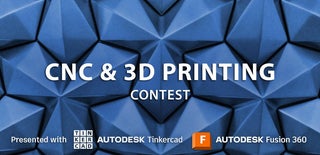Introduction: Yet Another Lego Saturn V Launch Effect
In this Instructable I am showing how I created a Lego Saturn V Launch effect. I know that it has been done a thousand times and I’m not the first but this is my take on it!
Supplies
Lego is going to retire this model soon so I knew I had to get one before I was at the mercy of the second-hand market.
Many people use the IKEA DETOLF glass door cabinet to display the model once they have created the launch effect, using the whole height of the cabinet to really show off the effect, but I wanted to keep the top shelf for a couple of other Lego models so I needed to create and use a short stand.
I designed and 3D printed a stand that consisted of an inner core that would have the LED’s wrapped around it, an outer, translucent wall that the pillow stuffing would stick to and a top and bottom lid to hold it all together. I also used a Pimoroni Plasma 2040 to control and drive a 1 metre length of WS2812 addressable flexible strip of LED’s, I used a 60 pixels per metre strip.
Step 1: Assembly
Assembly was simply a case of gluing the inner core to the base
Wrapping the LED strip around the core
Putting on the outer wall and top lid and gluing them to the other parts. I cut a small notch in the outer wall for the wires to pass through and then powering them on to ensure they work.
I used some spray glue on the outer wall and then put the stand in the bottom of the cabinet, stood the model on it and added a load of pillow stuffing to simulate the exhaust plume.
Then I turned off the lights and admired the effect!
Step 2: Code & 3D Print Files
The Pimoroni Plasma 2040 is a great little dev board that is designed specifically for addressable LED’s so using this made coding very simple, I simply used their random-blinkies example from their GitHub page and changed just 4 settings; Number of LED’s to 60 to match my strip, the Hue Start and Hue End values to get a range of red/yellows that I was happy with and the Speed to make them a bit faster.
I used Micropython on my Plasma 2040 instead of Circuitpython as I found the random-blinkes example almost perfect for my use case. Once you have installed Micropython on the Plasma 2040 you just save the main.py file to it, I used Thonny to interact with the Plasma 2040 and then it will run when power is turned on.
I printed the base and inner tube in black PLA, the outer wall and top lid were printed in translucent PLA. The outer wall was printed in vase mode with no top or bottom so it printed as a tube.
Step 3: Links & Credits
All files, pictures and an alternative write up can be found on my GitHub project page
The 3D models were designed in Tinkercad and can be found here in case you want to copy them
Thanks to Pimoroni for creating this great little product and providing example files.

Participated in the
CNC and 3D Printing Contest














